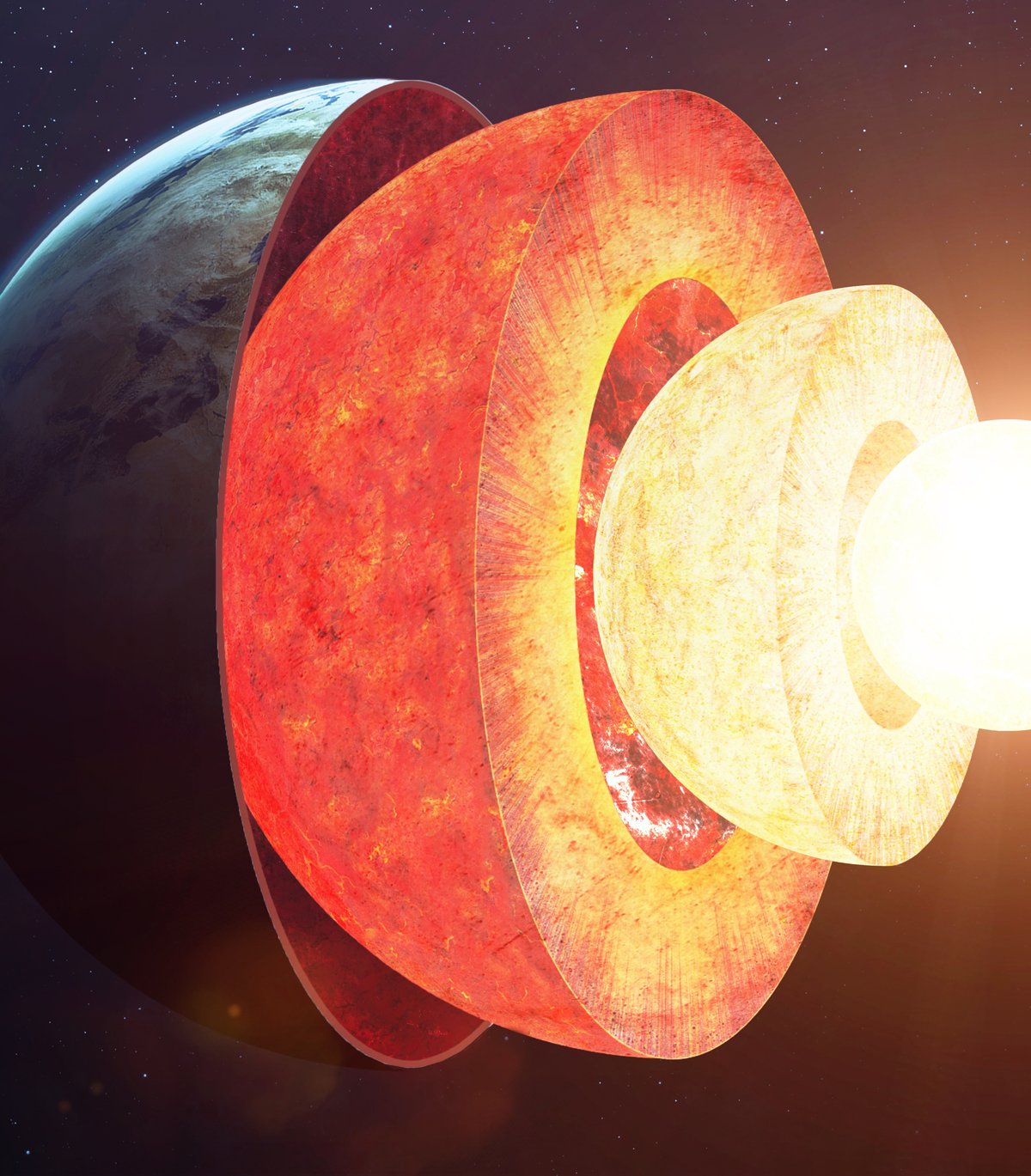In a study published in the scientific journal Nature Geoscience, a group of scientists suggests that the rotation of the Earth’s core began to slow down in 2019; a process so intense that recently the center of the planet may have started to rotate in the opposite direction.
The paper’s researchers noted: This new cycle can last up to 70 years and affect the length of days. But calm down, this is a structural event on Earth, not an apocalyptic event.
The authors of the study used seismic records to understand the rotation change in the Earth’s core, and even speculated that the process may have initiated some natural disasters.
After analyzing data from the planet’s inner core between the 1990s and 2020s, Scientists claim that a noticeable change has been detected in recent yearsThis possibility is not just another “guess” that study researchers are tackling.
John Vidale, Dean of Earth Sciences at the California Dornsife College of Letters, Arts and Sciences (USC Dornsife), confirmed that the planet has been experiencing a slow slowdown in recent years until it started rotating in the opposite direction. This could cause different changes that will profoundly affect the planet.
After years of debate, the scientific community has come to understand that the rotation of the nucleus is not completely consistent, because it appears to be constantly slowing down. It may seem like a relatively simple argument, but the truth is that the word “simple” goes far beyond this topic. According to experts, Understanding the Earth’s core is extremely difficult because we cannot observe it directly.
“Here we analyze repeated seismic waves from the early 1990s and show that all paths that previously showed significant temporal changes have changed very little in the last decade. This globally consistent pattern suggests that the differential rotation of the inner core has recently been disrupted.”
Why is the Earth’s core spinning upside down?
The Earth’s inner core was first understood in a study by Danish seismologist Inge Lehmann in 1936. At that time, the scientist discovered that the region behaved like a ‘solid metal ball’, but the variation in rotation speed was only just beginning to be investigated. The first seismological evidence was presented only in the early 1990s.
Most often, researchers have used data from seismic waves and earthquakes to understand its interactions with the planet’s inner core, but not all of the scientific community agrees with this hypothesis. Some scientists say data is still limited because of the difficulty of collecting samples and making observations.
According to a new study led by Vidale, Data shows that the Earth has been slowing down significantly in recent years, starting to stand still and then reversing. The scientist claims that these changes in the rotation of the Earth’s core appear to have a 70-year cycle. However, the article notes that this planet’s response remains an unsolved mystery.
Relationship between the core and the Earth’s magnetic field
Some researchers believe that The rotation process in question is related to the Earth’s magnetic field, as it has a push and pull flow that affects the rigidity and position of the inner core. Slower rotation could affect the magnetic field and shorten the length of a day on EarthIn any case, science continues to try to understand the impact of this change.
“When I first saw the seismograms suggesting this change, I was stunned. But when we found two dozen more observations that pointed to the same pattern, the conclusion was inescapable. Inner core slows for first time in decadesOther scientists have recently discussed similar and different models, but our latest study provides the most convincing solution,” Vidale said in an official statement from USC Dornsife.
Vidale’s team suggests: The planet is expected to begin experiencing an increase in its inner core rotation again in about five to ten years. With the advancement of technology and the scientific method, it is possible to better understand the structure of the Earth and its strange ‘coming and going’ rotation.
Did you like the content? So take advantage of the fact that the Earth’s magnetic field may be older than the core and don’t forget to share the article on your social networks. Until later!
Source: Tec Mundo
I’m Blaine Morgan, an experienced journalist and writer with over 8 years of experience in the tech industry. My expertise lies in writing about technology news and trends, covering everything from cutting-edge gadgets to emerging software developments. I’ve written for several leading publications including Gadget Onus where I am an author.













